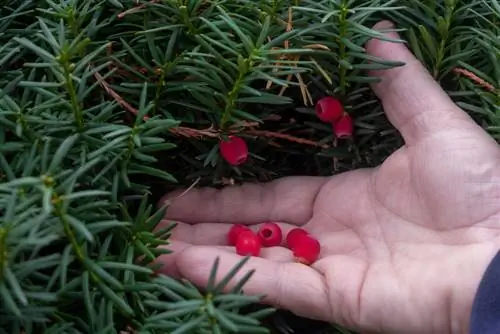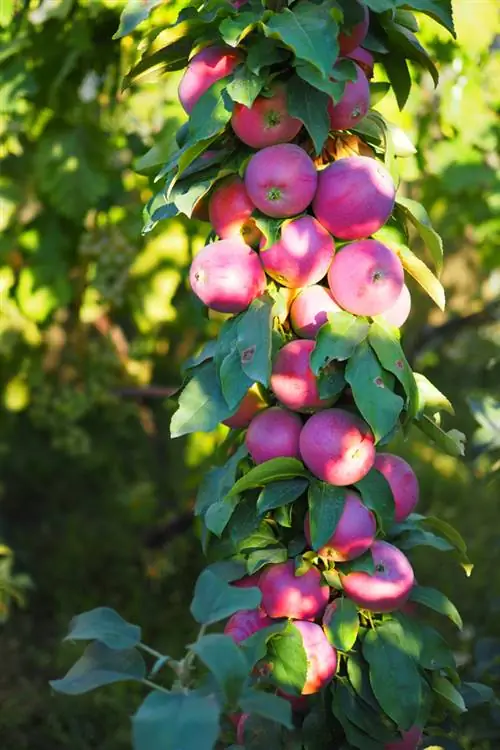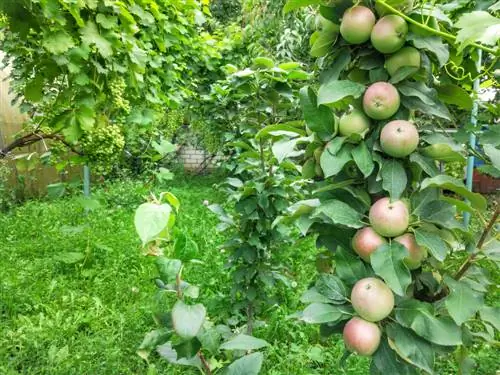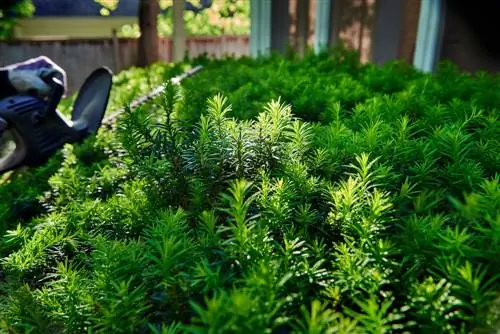- Author admin [email protected].
- Public 2023-12-16 16:46.
- Last modified 2025-01-23 11:22.
Word has probably gotten around by now that the yew tree is a highly poisonous plant that can be dangerous to humans and animals. However, hardly any other plant is so suitable for opaque, evergreen hedges. The question arises as to whether there is a non-poisonous variety?
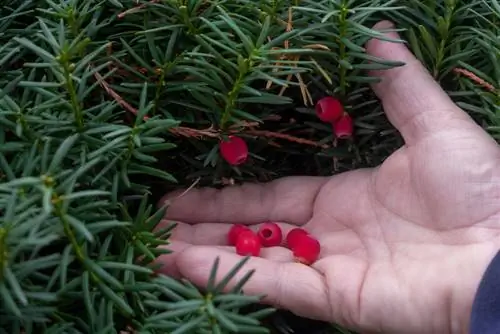
Is there a non-poisonous variety of yew tree?
No, there is no non-poisonous type of yew tree, as all yew trees are poisonous. The poison taxin is contained in all parts of the plant. For a less dangerous option, choose the male variety 'Hillii' of Taxus media, which does not bear berries.
Are all yew trees poisonous?
Unfortunately, all yew varieties are actually poisonous. There is no such thing as a non-poisonous strain. Perhaps you are surprised that birds eat the red berries or that your dog does so, apparently without harm?
First of all: What is poisonous to us humans does not necessarily have to be intolerable to other animals. On the other hand: The only non-poisonous part of the yew is the red pulp. Only the seed coated in it contains the poison taxin - but as soon as the kernel is bitten or injured, this poison comes out and becomes effective.
How poisonous is the yew tree?
Yew trees are potentially fatally poisonous to humans and animals. Above all, you have to be careful
- Horses
- Cattle
- Sheep and goats
- Small mammals such as rabbits, guinea pigs etc.
- Turtles
- Dogs and cats
When it comes to pets, it is better not to assume that the animals “already know what is good for them and what is not”. This is not always the case because many of the human inhabitants have simply forgotten this “knowledge”. Therefore, yew trees or yew tree remains have no place in pastures, paddocks and runs.
The yew poison is found in all parts of the plant, including the wood and needles.
Is the yew tree poisonous even when touched?
Basically, the yew poison Taxin only becomes effective when consumed, i.e. H. you have to eat it. However, touching it is not automatically safe, because especially during gardening care work such as cutting, the poison can adhere to clothing or parts of the body (e.g. hands) and, through careless actions (such as eating with unwashed hands), can reach the mucous membranes and cause poisoning.
This is manifested by a variety of symptoms, but above all by
- Diarrhea and/or vomiting
- Rapid heartbeat and/or irregular heartbeat
- Nausea
- Dizziness, circulatory problems
- excessive sweating
Always wear gloves, long clothing and safety glasses when cutting the yew hedge.
How much yew is deadly?
The dark green, shiny needles and the seeds of the yew tree, which are surrounded by bright red pulp, contain a particularly high amount of poison. Around three milligrams of taxine per body weight is considered fatal. This means that just 50 grams of yew needles can kill an adult - even smaller doses are sufficient for children.
However, poisoning with yew only occurs very rarely; it is significantly more common in animals. In contrast to many other poisonous plants, yew poison retains its effectiveness even when dried. It is only lost during composting. A few animals, such as deer and other wild deer as well as pests such as the black weevil, can tolerate the poison due to a special feature of their digestive system.
Tip
Yew without berries
The bright red berries of the yew tree are particularly tempting. To rule out accidental poisoning, you can also plant the non-fruiting yew variety 'Hillii', an all-male variety of Taxus media, in the garden.

